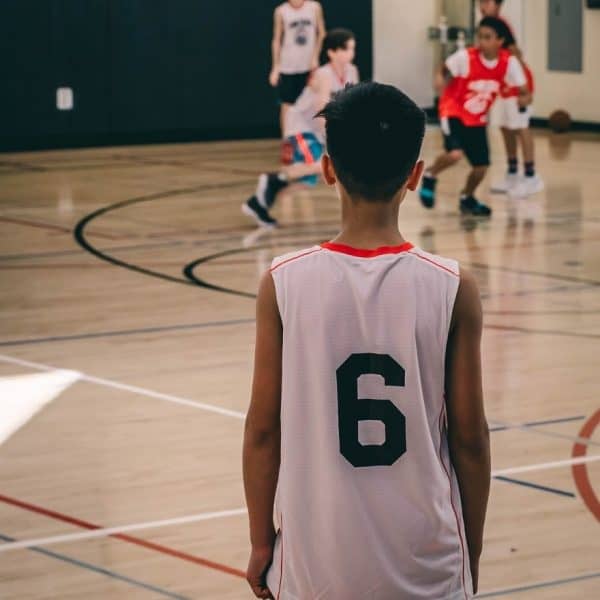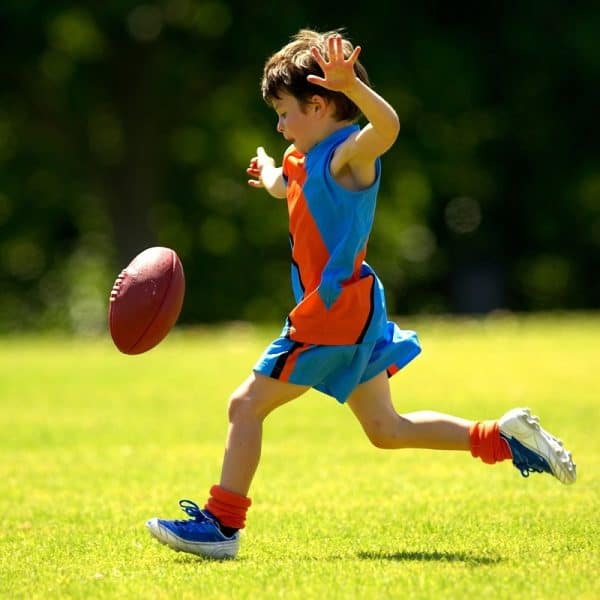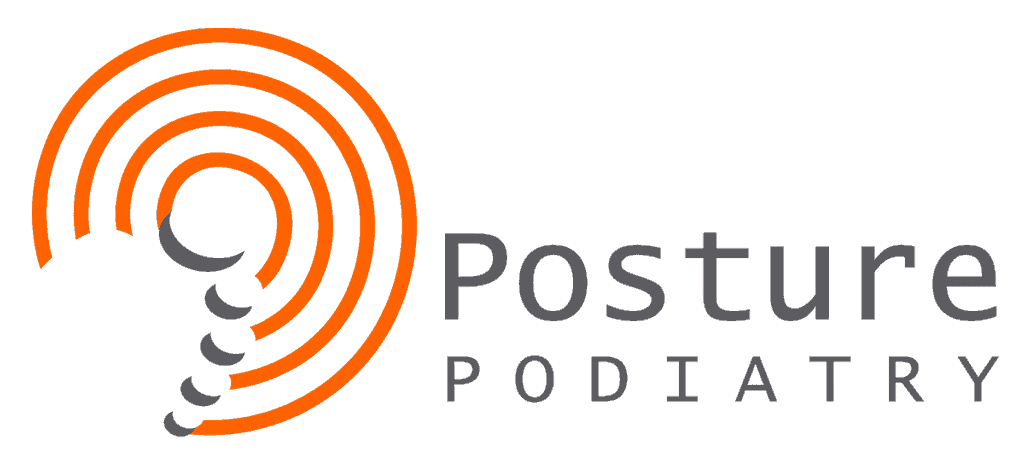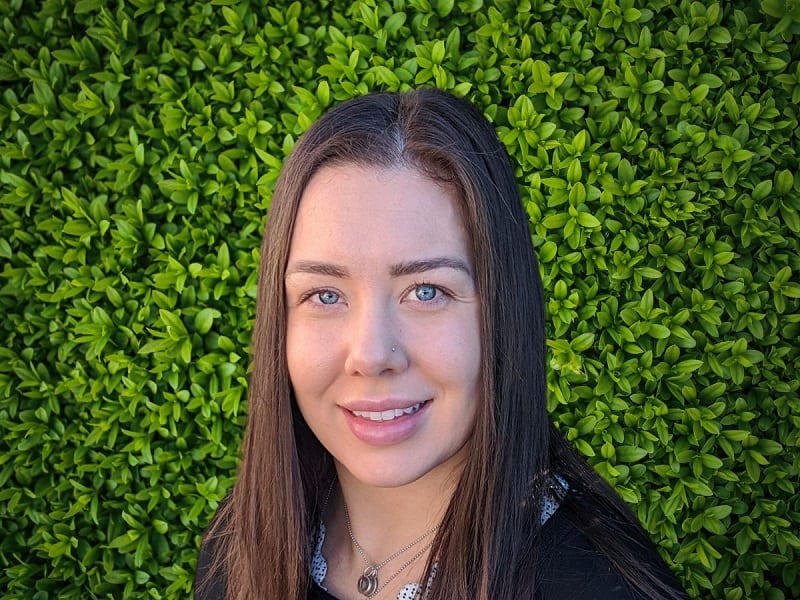It’s that time of the year again when Sever’s Disease heel pain commonly strikes. It often starts with preseason training and gets progressively worse with very active children.
Are you a parent, grandparent or carer of a young athlete suffering from heel pain due to Sever’s disease? If so, it may be time to consider treatment options at Posture Podiatry. Our Adelaide Podiatrists have developed an effective treatment program based on over 35 years of experience in the treatment of kids’ heel pain.
In the realm of paediatric sports injuries, Sever’s Disease stands out as a common culprit behind heel pain in many young athletes. Our comprehensive guide delves into the intricacies of managing this condition, providing valuable insights and strategies for parents, grandparents, carers and coaches.
What is Sever’s Disease?
Sever’s Disease, clinically known as calcaneal apophysitis, is the most common cause of heel pain in children that our podiatrists encounter. It’s a type of foot pain that affects the heels of growing children and adolescents, particularly those engaged in sports. It’s commonly seen in very active children and frequently causes limping after sport and sometimes during sporting activities.
This condition arises during periods of rapid growth, typically between the ages of 8 and 15, when the heel bone (calcaneus) is still developing. It can be very frustrating for parents, players and coaches because the heel pain often prevents children enjoying their sport and performing at their true potential.

It’s best described as painful inflammation of the heel bone at the area of the growth plate. This part of the heel bone growth plate is known medically as the calcaneal apophysis. This is why you may hear the term “calcaneal apophysitis” used instead of Sever’s disease. Calcaneal apophysitis simply means inflammation of the growth plate of the heel bone.
The heel serves as a critical structure for weight-bearing and mobility, making it susceptible to injury in very active young athletes. As children participate in sports that involve running, jumping, or sudden changes in direction, the repetitive impact can place strain on the developing heel bone. This condition is most prevalent in those who partake in high-impact sports such as football, soccer, basketball, netball, tennis, and gymnastics. Understanding Sever’s Disease is crucial for parents, coaches, and young athletes to effectively manage heel pain and ensure a safe return to activity.
The term Sever’s Disease was originally first described by Dr J.W. Sever, MD, in the New York Medical Journal in 1912, hence, the name. While the term “disease” may evoke concern, it is essential to remember that Sever’s Disease is a manageable condition. Most children will outgrow it as their bodies mature, but proper understanding and intervention is crucial in reducing the child’s disability, dicomfort and pain.
Parents and coaches should be vigilant in recognising the signs of this condition and take proactive steps to support children in seeking help and the right care from experienced podiatrists who understand the disease.
Find an Adelaide Podiatrist Near Me for Sever’s Disease Heel Pain Treatment
BOOK ONLINE or Call 8362 5900 to see how we can help.
What causes Sever’s disease?
The cause of this type of heel pain in children and adolescents is thought to be a combination of overuse, rapid growth and overload on the growth plate of the heel.
The overuse tends to occur as a result of tractional forces applied by the achilles tendon at the back of the heel bone and the plantar fascia ligament just beneath the heel bone. This pulling force by the achilles tendon on the growth plate is often made worse by tight calf muscles and excessively pronated feet (i.e. feet that “roll in” too far). This repetitive pulling and tightness usually occurs with activities that involve running and jumping, or with sudden growth spurts during adolescence.

Sever’s disease will eventually settle down once the growth plate in the heel bone closes over, however, this type of overuse injury can limit a child’s ability to participate in sport and general physical activity. Fortunately, an experienced podiatrist can provide significant relief.
The “Sever’s Disease Heel Pain Treatment Program” has been developed and refined over the last 35 years and with this program of care, significant pain relief is usually observed within weeks of treatment rather than waiting months or longer for satisfactory results.
Posture Podiatry now has access to a unique Sever's Disease Heel Pain Treatment Program. Share on X
Find an Adelaide Podiatrist Near Me for Sever’s Disease Heel Pain Treatment
BOOK ONLINE or Call 8362 5900 to see how we can help.
Who is affected by Sever’s disease?
This condition is commonly seen in active children between the ages of 8 and 15 years. This type of kids heel pain is a common cause of foot pain, particularly in young, physically active children and teenagers. It tends to be more prominent in boys than girls and usually develops during the rapid growth years around puberty.
This type of heel pain in children can be quite disabling and tends to affect those children who are very busy with sporting activities. Children will commonly complain of pain after football, soccer, basketball, netball, volleyball, gymnastics, tennis, or any other sport involving running and high impact forces on the heels.

What are the symptoms of Sever’s disease?
In the initial stages of the condition, most children displaying signs of Sever’s disease will tend to “limp” off the oval, sports field or sports court and complain of sore heels near the end of activity. Limping during or after sport involving running or jumping is commonly seen.
As the condition progresses, children may complain of pain during activity especially with running and jumping activities. Increased sporting participation will tend to cause a proportionate increase in pain.
In very severe cases, pain prior to sporting activities may be present. Pain with arising from rest in the morning and walking on the toes may be seen if the condition becomes extremely severe.
Clinically, a podiatrist will typically find severe discomfort with squeezing of the heel bone from either side of the heel. Pain may also be located at the back or bottom of the heel and is sometimes accompanied by swelling or tenderness.
Find an Adelaide Podiatrist Near Me for Sever’s Disease Heel Pain Treatment
BOOK ONLINE or Call 8362 5900 to see how we can help.
How is Sever’s disease diagnosed?
A healthcare professional, typically a podiatrist, physiotherapist or orthopedic specialist, can diagnose Sever’s disease based on the patient’s symptoms, a physical examination of the foot, and possibly imaging tests, such as an X-ray, to rule out other possible causes/conditions.
Where can I get help for Sever’s disease?
Time to end the frustration of players, parents, carers and coaches. Sever’s Disease can be treated successfully in a matter of weeks rather than months.
Book online for Posture Podiatry’s heel pain assessment for Sever’s Disease or Call 8362 5900. We’re a local Adelaide heel pain clinic with over 35 years of podiatry care experience in the treatment of children’s heel pain. We know what works to resolve pain fast.
What is the best Sever’s disease treatment?
There is NO single treatment modality which has been proven to be better than others in the long term treatment and management of pain caused by Sever’s disease. This is why a structured heel pain treatment program with a specific combination of modalities at just the right time produces the best results.
The good news is… this heel pain in children is very simple to treat and children usually respond very quickly to treatment once treatment of Sever’s disease commences.
Gavin Daly, Tom Kolesnik, Tess Carey, Will Duncan and Tessa Coleman have over 50 years of combined clinical experience treating this type of common foot problem. The Posture Podiatry “Sever’s Disease Heel Pain Treatment Program” was developed after 35 years of clinical experience in the treatment of this disorder. The end result has been a specific treatment regimen designed to help eliminate this common cause of foot pain within just a few weeks.

The Adelaide Podiatrists at Posture Podiatry now have access to this program to help your child obtain the fastest possible heel pain relief.
Find an Adelaide Podiatrist Near Me for Sever’s Disease Heel Pain Treatment
BOOK ONLINE or Call 8362 5900 to see how we can help.
The Posture Podiatry Sever's Disease Heel Pain Treatment Program was developed after 35 years of clinical experience Share on X
If this condition affects both feet, the diagnosis can usually be made clinically. If only one foot is affected then x-rays may be considered necessary as a way of ensuring an accurate diagnosis. X-rays should always be taken of both feet even when only one foot or heel is painful. This is important to ensure serious problems such as bone infection or bone tumours are not overlooked. Even in cases where both feet have been affected, x-rays or MRI scans should be carried out if a child is failing to respond to conservative treatment.
Treatment of Sever’s disease usually involves a combination of the following:
- Ice application after activity
- Advice and guidance on training errors and / or activity review
- Review of training surfaces
- Specialised shoe inserts and/or modifications
- Specific stretching and strengthening exercises.
- Orthotic inserts with specific Sever’s Disease modifications may be needed where the tractional forces on the heel growth plate are decreased
- Anti-inflammatory measures
- Footwear review, assessment and advice
Treatment of Sever’s disease does NOT require surgery. This foot condition responds very well to conservative treatment usually within a matter of weeks.
If your child suffers from heel pain, be sure to get them checked out by an experienced podiatrist especially when only one foot is affected.

Sever’s disease is a self-limiting condition and will only occur during the growing years before the heel growth plate closes over. It will eventually settle down and the degree of treatment needed will depend on the level of pain experienced by the child.
Find an Adelaide Podiatrist Near Me for Sever’s Disease Heel Pain Treatment
BOOK ONLINE or Call 8362 5900 to see how we can help.
Does Sever’s disease taping help?
Taping or strapping may be helpful in some instances but is rarely helpful long term when used by itself. This is because the taping only helps to reduce tractional stress on the heel growth plate. It does not help to offload the heel bone itself. Other treatment modalities such as correct footwear and orthotic support need to be used in conjunction with the correct taping in order to gain the best results quickly.
Do Sever’s disease exercises really make a difference?
The “right” exercises at the “wrong” time can make things worse. Our podiatrists will provide specific personal guidance on what exercises should be completed at the right time to give your child the best possible chance of eliminating their painful heels as fast as possible.
What else can cause heel pain in children?
Problems including fractures, bursitis, ankle sprains, stress fractures, juvenile rheumatoid arthritis, tumours and tendinitis are all possible causes of heel pain in a child. These types of problems need to be ruled out during the assessment and diagnostic stage. Our podiatrists have been specifically trained to thoroughly assess heel pain in children.

Can Sever’s disease be prevented?
While it may not be possible to prevent Sever’s disease entirely, certain measures can help reduce the risk or severity of symptoms. These include maintaining a healthy body weight, wearing properly fitted footwear, gradually increasing activity levels, and incorporating regular stretching and strengthening exercises into physical activities. Fortunately, early intervention by an experienced podiatrist helps children return to normal activity levels much sooner.
Find an Adelaide Podiatrist Near Me for Sever’s Disease Heel Pain Treatment
BOOK ONLINE or Call 8362 5900 to see how we can help.
How long does Sever’s disease last?
The duration of Sever’s disease can vary from person to person. With appropriate treatment and adherence to recommended measures, the symptoms generally improve within a few weeks to several months. Without treatment, the pain can persist for many years but, fortunately, the condition is self usually self limiting and the condition usually resolves once the growth plate in the heel fully matures.
Does footwear make a difference with Sever’s Disease?
The right shoes or footwear are very important. When it comes to choosing football boots, netball shoes, soccer boots, or general everyday footwear, it’s important to choose the right features which help to alleviate stress on the heel bone. Ask our podiatrists about appropriate features to ease the pain.
Can Sever’s disease cause long-term complications?
Sever’s disease does not typically lead to long-term complications, however, if left untreated or if there are underlying contributing factors, it is possible for the condition to persist or recur. It is important to address the symptoms promptly to prevent any potential complications.
Can my child continue to participate in sports with Sever’s disease?
In most cases, it is recommended to modify activities and limit high-impact sports or activities that aggravate the symptoms during the healing phase. Your podiatrist may recommend low-impact exercises and cross-training that reduces excessive strain on the heels during the healing stages.
Where Can I Get Help For Sever’s Disease?
If you’re searching for an Adelaide Podiatrist nearby who can help with Sever’s Disease heel pain treatment, you can always BOOK ONLINE or Call 8362 5900 to schedule an appointment to see just how we can help. We’ll help you find the right solution to alleviate your pain. Terms and conditions apply as detailed below.




